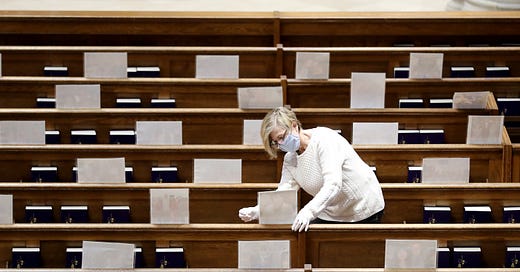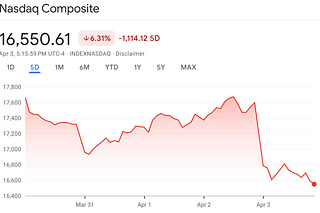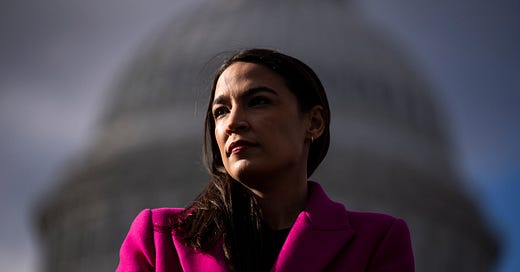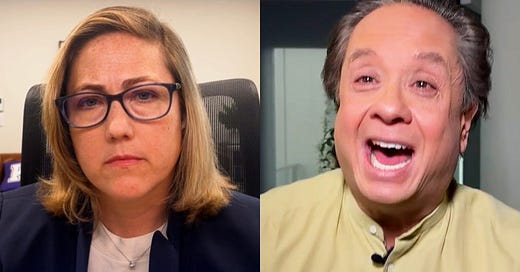

On Friday evening a closely divided Supreme Court rejected a challenge to the state of California’s executive order—intended to avert spread of the novel coronavirus—which restricts occupancy in churches to 25 percent of building capacity or no more than 100 attendees.
Chief Justice John Roberts joined the four liberals to write for the majority, while Justice Brett Kavanaugh penned a dissent joined by Neil Gorsuch and Clarence Thomas. (Samuel Alito also indicated his support for the challengers but did not explain why.) The split illuminated divisions on the Court that we are almost certain to hear more of in coming terms: Many conservatives have grown discontented with the Court's modern regime on religious accommodation and want it overturned. But it is not clear that the votes are there to accomplish this revolution.
Over the last 60 or so years liberals and conservatives have switched places on the question of religious accommodation. Few foresaw this development.
At mid-century, it was the Court’s more liberal Justices, such as William Brennan, who championed the idea of a constitutional right to religious accommodation. They prevailed for a while, in cases such as Sherbert v. Verner (1963)—on unemployment compensation for workers who quit a job for religious reasons—and Wisconsin v. Yoder (1972)—on whether compulsory school attendance laws could be applied to the Amish.
At length, in 1990, the Court reversed course in the case of Employment Division v. Smith, penned by Justice Antonin Scalia. That decision found that the Constitution does not, after all, require government to modify the application of laws where reasonably feasible in order to accommodate religious believers’ practice. Instead, it is enough that government is enforcing a neutral and generally applicable law, even if doing so incidentally burdens religious belief—so long as the law is not drafted or applied so as to discriminate against religious practice or purposely harm it.
In a story by now familiar, the cause of religious accommodation—symbolized by the subsequent passage of the Religious Freedom Restoration Act at the federal level and mini-RFRAs in many states (though not California)—then changed political sides. As conservative and orthodox religious thinkers began to feel more under siege from the government, they came to see RFRAs as one of the few defenses they had left. At the same time, many liberal thinkers, concerned that accommodation could come at the expense of discrimination law, began backing off their support for the idea, at least in part.
The crux of the California dispute that the Court ruled on last week was whether the California rules were neutral, generally applicable, and not badly motivated—in which case the state would probably win—or if they discriminated against religion—which would lead them to flunk even the permissive Smith test. For both Roberts and Kavanaugh, the question therefore was: Had California treated worship services neutrally with respect to comparable secular gatherings?
Yes, it had, wrote Roberts in his brief opinion. He noted that “lectures, concerts, movie showings, spectator sports, and theatrical performances” had all been put under restrictions at least as severe (many in fact were closed down outright, rather than allowed partial operation as were churches).
Kavanaugh’s dissent reached instead for a less obviously parallel set of “comparable secular businesses.” For example, the occupancy restrictions had been more lenient toward “retail stores, pharmacies, shopping malls, pet grooming shops, bookstores, florists, hair salons, and cannabis dispensaries.”
I’m not sure how this gets around Roberts’ point for the majority that in churches, unlike in drugstores or pet grooming shops, “large groups of people gather in close proximity for extended periods of time.” The point of a congregation is to congregate, no? And extended close contact in enclosed settings is the most common way for the virus to spread.
The wider problem is that even after 30 years, there is no real agreement on how to apply Smith. To many judges, it amounts to what lawyers call a rational basis test. Which is to say: the government wins so long as it has some non-crazy rationale for what it has done, even if its rules are overbroad or mistaken in some details. To other judges, the Smith ruling suggests something stricter: Kavanaugh’s dissent reads like a call for churches to get a sort of most-favored-nation status, in which they are entitled to whatever are the best deals handed out to any entity and not merely lumped in with the likes of lecture halls and secular choir performances.
For two reasons the California case’s importance may be less than it appears. First, Roberts's language stresses the dispute’s early procedural posture: plaintiffs were asking for a quickie permanent injunction, and while they hadn't met the heavy burden of proof needed for that, they might still carry the less heavy burden of requesting a stay while arguments unfold. Furthermore, things may not reach that point because California and other states are likely to relax restrictions as the virus comes under control—and in so doing could render the controversy moot.
So long as courts restrict themselves to the question posed by Smith in its strong form—whether the state has laid arbitrary burdens on religion—plaintiffs are likely to face a heavy lift.
Religious gatherings of many faiths have been prominent spreader events for COVID-19 around the world. As a policy matter you can make a reasonable case that church congregations—the overwhelming majority of which have no wish to defy sound public health advice—deserve ample accommodation. But for now, at least in states such as California that lack a version of the Religious Freedom Restoration Act (RFRA), they may need to seek that accommodation through the political process.
Alternatively, this decision can be seen as a fight (without saying so) over whether Smith in strong form is still good law.
If you do see it that way, it could be a sign that there are not five votes on today's Court to overturn it.









